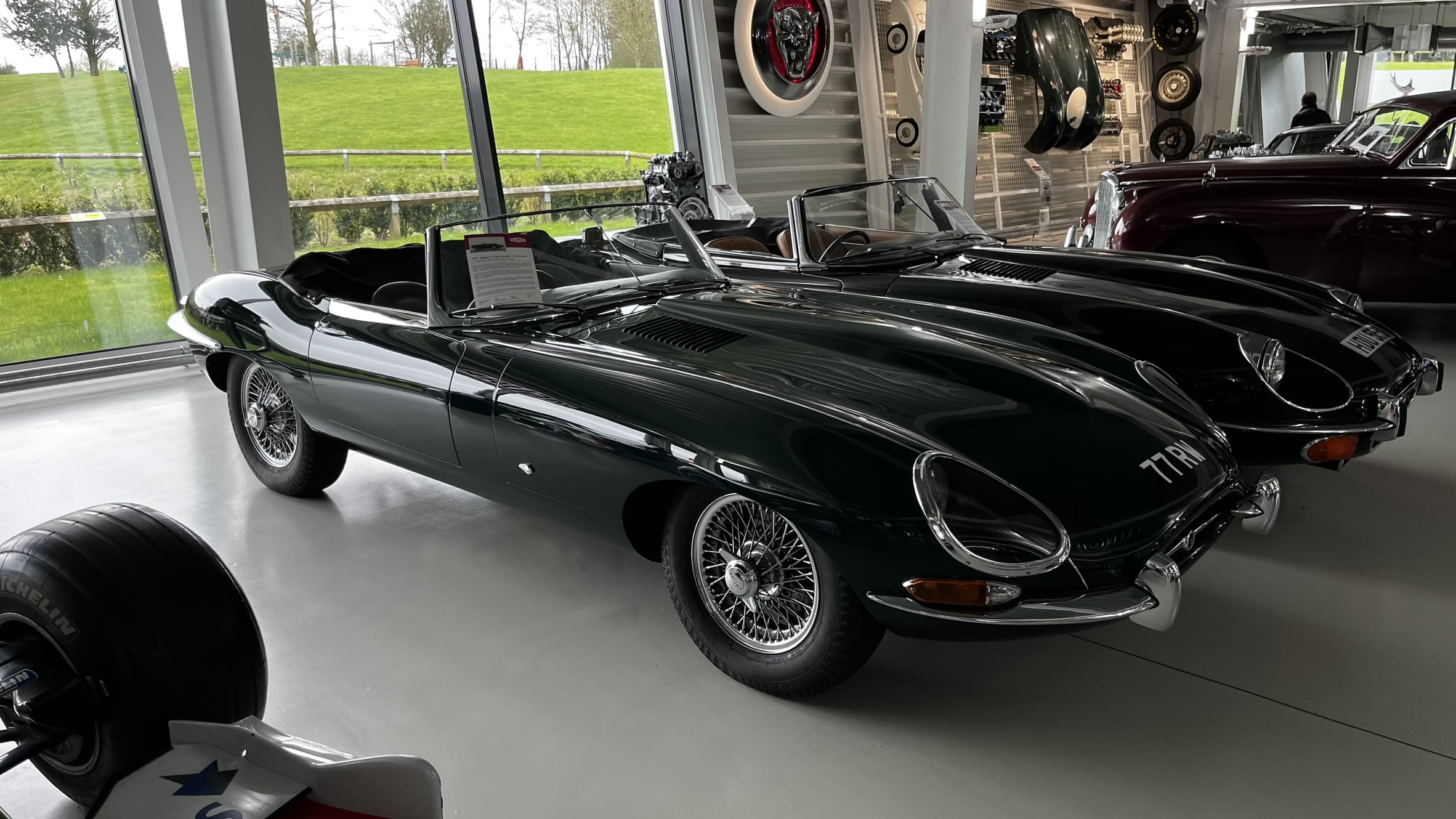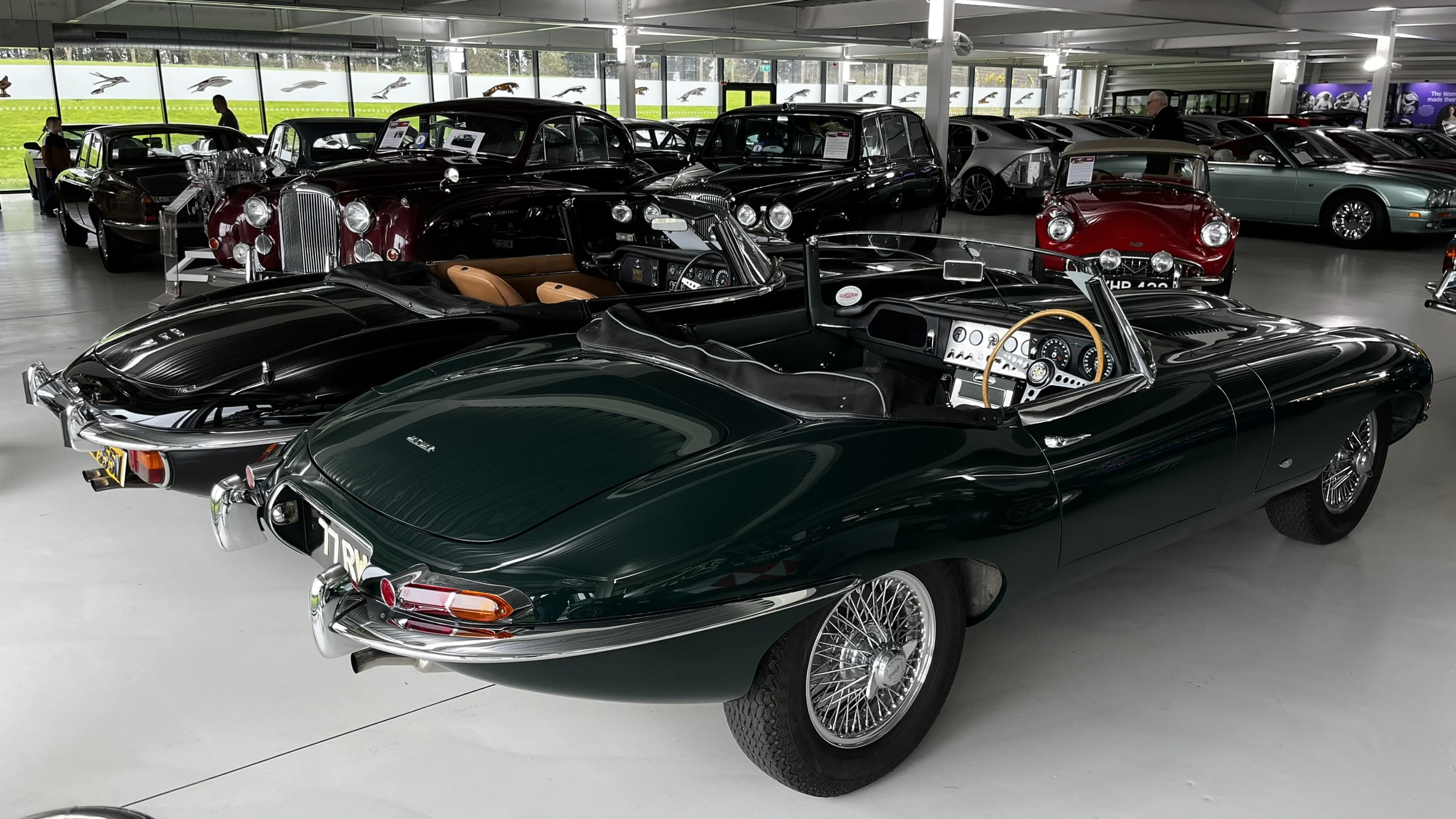1961 Jaguar E-type Series I
The Jaguar E-Type Series I, produced from 1961 to 1968, is widely hailed as one of the most beautiful and iconic cars ever built. With its sleek design, advanced engineering, and remarkable performance, the E-Type set new standards in the automotive world. Enzo Ferrari famously called it “the most beautiful car ever made,” a sentiment that still resonates with car enthusiasts today. The E-Type’s enduring legacy makes it a coveted classic, representing the pinnacle of 1960s automotive design and engineering.

The Jaguar E-Type was born out of the success of Jaguar’s racing cars, specifically the C-Type and D-Type, which dominated the 24 Hours of Le Mans in the 1950s. Jaguar sought to translate its racing prowess into a road-going sports car that would capture the public’s imagination. The task fell to a team led by Jaguar’s chief engineer, William Heynes, and aerodynamicist Malcolm Sayer. Malcolm Sayer applied his expertise in aerodynamics to create a car with a sleek, low-drag body. The result was a design that was as functional as it was beautiful. The E-Type’s development was also influenced by Jaguar’s advanced engineering, particularly in its chassis and suspension design, which borrowed heavily from the successful D-Type race car.




The Jaguar E-Type Series I is renowned for its stunning design. The car’s long, sculpted bonnet, low-slung body, and flowing lines make it instantly recognizable. Key design elements include the glass-covered headlights, small front grille, and elegant, rounded rear end. The car’s design was not only about aesthetics; it was also highly aerodynamic, contributing to its impressive performance. The E-Type was built on a monocoque chassis, which provided exceptional rigidity and reduced weight. This was combined with a front subframe that supported the engine and front suspension. The independent rear suspension, designed by William Heynes, offered superior handling and ride quality.




The car also featured disc brakes all around, which was advanced for its time, providing excellent stopping power. Inside, the E-Type offered a blend of luxury and sportiness. The driver-focused cockpit featured a wood-rimmed steering wheel, leather seats, and a classic dashboard with easy-to-read gauges. The minimalist design ensured that the driver’s attention remained on the road, while the high-quality materials added a touch of refinement.



The Jaguar E-Type Series I was initially powered by a 3.8-liter XK inline-six engine, producing 265 horsepower. This engine was capable of propelling the car from 0 to 60 mph in under 7 seconds, with a top speed of around 150 mph. In 1964, the 3.8-liter engine was replaced by a larger 4.2-liter version, which offered improved torque and smoother power delivery while maintaining the same horsepower. The E-Type’s engine was paired with a four-speed manual transmission, and from 1965 onwards, a synchromesh gearbox was standard, enhancing the driving experience. The car’s performance, combined with its advanced suspension and braking systems, made it a joy to drive, whether on the open road or a winding track.





The Jaguar E-Type Series I was available in three body styles: the Fixed Head Coupe (FHC), the Open Two Seater (OTS), and later, the 2+2 Coupe. The FHC and OTS, introduced in 1961, were two-seater models, with the OTS featuring a convertible roof. In 1966, the 2+2 variant was introduced, offering a slightly longer wheelbase and additional rear seats, making it more practical for families. Each variant retained the E-Type’s distinctive design and performance characteristics. The 2+2’s extended dimensions provided more interior space and a different driving experience, but all Series I E-Types shared the same commitment to style, performance, and engineering excellence.

Jaguar XK Engine
The XK engine in the XK120 was a 3.4-liter inline-six, featuring twin overhead camshafts—a design that was advanced for its time.
The Jaguar E-Type Series I had a profound impact on the automotive world and popular culture. Its combination of breathtaking design, advanced engineering, and remarkable performance set new benchmarks for sports cars. The E-Type was not only a commercial success, with over 38,000 units sold, but it also became a cultural icon, epitomizing the spirit of the 1960s. The E-Type’s influence can be seen in many subsequent sports cars, and its design continues to inspire automotive designers today. The car’s success in motorsport, particularly in endurance racing, further cemented its status as a performance icon. Today, the E-Type Series I is celebrated as one of the greatest cars ever made. It is a favorite among collectors and enthusiasts, with well-preserved examples commanding high prices at auctions and classic car shows. The car’s timeless design and exhilarating performance ensure that its appeal remains undiminished, even decades after its introduction.